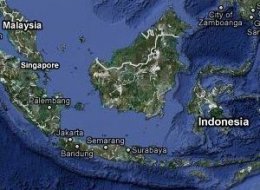NASA finds shrimp dinner beneath Antarctica
Video could cause scientists to rethink life in harsh environments
 | This video frame grab image provided by NASA, taken in Dec. 2009, shows a Lyssianasid amphipod, which is related to a shrimp. |
NASA via AP |
By Seth Borenstein
updated 48 minutes ago
WASHINGTON - In a surprising discovery about where higher life can thrive, scientists for the first time found a shrimp-like creature and a jellyfish frolicking beneath a massive Antarctic ice sheet.
Six hundred feet below the ice where no light shines, scientists had figured nothing much more than a few microbes could exist.
That's why a NASA team was surprised when they lowered a video camera to get the first long look at the underbelly of an ice sheet in Antarctica. A curious shrimp-like creature came swimming by and then parked itself on the camera's cable. Scientists also pulled up a tentacle they believe came from a foot-long jellyfish.
"We were operating on the presumption that nothing's there," said NASA ice scientist Robert Bindschadler, who will be presenting the initial findings and a video at an American Geophysical Union
meeting Wednesday. "It was a shrimp you'd enjoy having on your plate."

"We were just gaga over it," he said of the 3-inch-long, orange critter starring in their two-minute video. Technically, it's not a shrimp. It's a Lyssianasid amphipod, which is distantly related to shrimp.
The video is likely to inspire experts to rethink what they know about life in harsh environments. And it has scientists musing that if shrimp-like creatures can frolic below 600 feet of Antarctic ice in subfreezing dark water, what about other hostile places? What about Europa, a frozen moon of Jupiter?
"They are looking at the equivalent of a drop of water in a swimming pool that you would expect nothing to be living in and they found not one animal but two," said biologist Stacy Kim of the Moss Landing Marine Laboratories in California, who joined the NASA
team later. "We have no idea what's going on down there."

|
"This is a first for the sub-glacial environment with that level of sophistication," Ellis-Evans said. He said there have been findings somewhat similar, showing complex life in retreating ice shelves, but nothing quite directly under the ice like this.
Ellis-Evans said it's possible the creatures swam in from far away and don't live there permanently.
But Kim, who is a co-author of the study, doubts it. The site in West Antarctica
is at least 12 miles from open seas. Bindschadler drilled an 8-inch-wide hole and was looking at a tiny amount of water. That means it's unlikely that that two critters swam from great distances and were captured randomly in that small of an area, she said.





